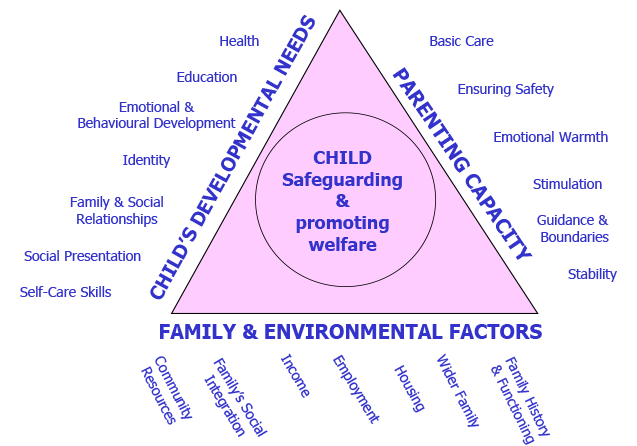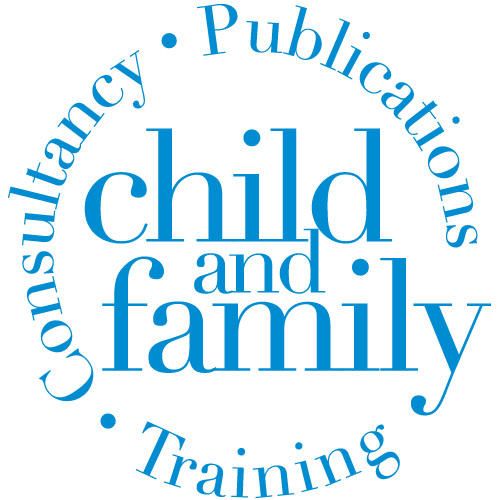- Introduction to HfCF Intervention Resources
- Engagement and goal setting
- Modifying abusive and neglectful parenting
- Promoting children and young people’s health, development and wellbeing
- Promoting attachment, attuned responsiveness and positive emotional relationships
- Promoting positive parenting
- Working with children and young people: Addressing emotional and traumatic responses
- Working with children and young people: Addressing disruptive behaviour
- Working with families
- Working with child sexual abuse
Introduction to the Hope for Children and Family Intervention Resources
What the resources are and set out to do
The Hope for Children and Family (HfCF) intervention resources consists of a set of resources for practitioners who work with children and families to support and enhance the quality of their direct work.
The HfCF guides are based on extensive research and practice experience of what works with children and families. Each guide contains a step by step approach to intervention and work sheets for use with children and families. The resources are intended to empower practitioners, children, young people and their families when working together – promoting strengths and addressing difficulties.
The guides are one of the key components of the HfCF programme. There are 10 intervention guides for practitioners that make up The Hope for Children and Families intervention resources:
- Introduction and overview
- Engagement and goal setting (including the case-specific information record)
- Modifying abusive and neglectful parenting
- Promoting children and young people's health, development and wellbeing
- Promoting attachment, attuned responsiveness and positive emotional relationships
- Promoting positive parenting
- Working with children and young people: Addressing emotional and traumatic responses
- Working with children and young people: Addressing disruptive behaviour
- Working with families
- Working with child sexual abuse
Additional resources:
- Brief descriptions of the intervention guides
- Therapeutic interventions after abuse and neglect
- Therapeutic interventions for anxiety, depression, trauma and disruptive behaviour
- Therapeutic interventions for looked after children, young people and their caregivers
The Engagement and goal setting guide helps practitioners formulate strengths and difficulties across the range of children's developmental needs, parenting capacity and family and environmental factors. The subsequent practitioner guides focus on parenting, direct work with children and young people and the family.
In practice, modules from all the practitioner guides need to be used in different combinations to meet the identified needs of the children, parents and carergivers, and the family. Work with parents should be closely associated with work with their children, and vice versa, ensuring there is a holistic programme of work with the child and family within their environment.
The intervention guides provide a basic toolkit for practitioners: related workshops and training sessions enhance practitioners' use of the resources in carrying out their everyday roles and responsibilities.
Guiding principles
The HfCF programme has been developed both to prevent and to address harmful parenting – abusive or neglectful – and the associated impairment of children and young people's health and development. These resources are underpinned by knowledge of the most effective evidence-based forms of intervention to prevent or address child physical, emotional and sexual abuse, neglect and exposure to violence. They draw on the most up-to-date evidence of the impact on children and young people that is associated with being exposed to harmful parenting and, therefore, address children and young people's anxiety, depression, trauma and/or conduct problems, including sexualised behaviour. The approach is also informed by the known personal and interpersonal components of intervention – alliance, client motivation and practitioner factors – which are common to all interventions. These components contribute to treatment outcomes to a significant extent by establishing a sense of hopefulness – a significant factor in recovery. The findings from all the relevant research were integrated (Bentovim and Elliott 20141; Bentovim and Gray 20152) and underpinned the development of the intervention guides for practitioners. A fuller account of the background research informing the HfCF approach is found in the Introduction and overview guide.
Each intervention guide is informed by a broad review of the literature on the distinct specialist treatment protocols (systemic, cognitive behavioural and dynamic). From this review, the 'common practice' elements that characterise the approach were distilled, and the main steps of that practice approach set out with guidance on how to carry them out. The various steps are integrated into the modules, and in turn the modules are integrated into the set of intervention guides for practitioners. Each guide presents a consistent, step-by-step approach to intervention bringing together effective practice that can be used by a wide range of practitioners working in different contexts.
The Assessment Framework (AF) triangle provides a map for gathering and organising information gathered when working with children and families. It has been utilised to formulate the interventions set out in the intervention guides.

The practitioner uses the AF to organise information gathered about children's developmental needs, and the capacity of their parents to meet their needs within the context of the family's history and functioning, as well as their relationship to wider family and community resources.
Components
Each guide contains a number of modules that have a consistent structure. A module includes:
- Practitioner briefings summarising theory and research, and outlining the approach being followed within the module
- Content and materials specified according to whether they are focused on parents, children and young people, or families. Relevant steps are outlined to achieve an evidence-based goal, and the particular focus of the module is set out
- Suggested scripts, identified by a 'script' symbol, indicating that they can be used with parents, children and families. These are not prescribed, but are suggestions to help practitioners understand what the module is aiming to achieve, and support practitioners in finding their own voices and approaches to using the resources
- Guidance notes giving practitioners an understanding of the background to the particular steps and supporting their direct work
- Activities supported by worksheets that guide the practitioner and help achieve a particular planned outcome
- Practice – role plays and coaching approaches to reinforce learning on the approach being used
- Handouts for parents to take home and help remind them of particular approaches outlined in their meetings with practitioners
- Worksheets for children and parents to use and help them negotiate the various steps.
Using the resources
So what is special about the Hope for Children and Families intervention approach? What makes it different from other approaches?
First, it is a toolkit of resources which helps practitioners guide their decision-making and interventions. It is grounded in evidence-based processes and practices, but is a departure from typical evidence-based protocols. It permits flexibility in selecting which intervention guide applies to the particular child and family the practitioner is working with, which modules to select, the order in which modules are delivered and the length of time spent on each step of the intervention.
The practitioner can find their own language to make interventions. The approach is interactive, dynamic and collaborative and creates a platform for strategic and responsive applications of evidence-based procedures for a wide range of practitioners. The HfCF approach is not intended to be followed slavishly or exclusively. There are other approaches which can be incorporated or used, particularly if the practitioner finds them helpful. Next steps are guided by the practitioner's decision-making based on children's and families' responses, not prescribed by the manual.
Targets for intervention are identified and remain the focus of children and families, being reviewed over time. This means that the sort of broad set of concerns occurring within complex family situations that are so commonly worked with in children's services contexts can be managed. There is flexibility in the pace of work, modules can be repeated, and sequences can be changed or revisited. Practitioners individualise care and provide an approach to make decisions which are grounded in evidence, on the one hand, and fit the needs of the children and family and the practitioner.
Practitioners have found using the evidence-based resources in HfCF approach to be motivating and confidence building. Their use brings meaning to their work, gives children and families a stronger voice and leads to more effective outcomes.
Dr Arnon Bentovim
Piloting the intervention resources
During the autumn of 2014, Child and Family Training ran free Regional Seminars on the C&FT Hope for Children and Families Programme.
Five pilot sites (Birmingham City Council, Cambridgeshire County Council, LB of Merton, Nugent Care and Sheffield City Council) jointly hosted the regional events with C&FT. They described their experiences using the Hope for Children and Families Intervention Resource Pack; what supports its effective implementation, how it impacts on practitioner's direct work and early findings about outcomes of children and families.
For more information about the Hope for Children and Families Programme Training and Resources contact us.
The themes for the workshops reflected the different elements of the Hope for Children and Families Programme:
- Initial stages of work: engagement and hope
- Positive parenting
- Targeting abusive and neglectful parenting
- Working with children and young people: disruptive behaviour
- Working with children and young people: emotional and traumatic response
- Working with families
- Working with children who have been sexually harmed / children who present sexually harmful behaviour
1. Bentovim, A. & Elliott, I. (2014). Hope for Children and Families: Targeting abusive parenting and the associated impairment of children. Journal of Clinical Child & Adolescent Psychology, 43(2), 270-85. doi:10.1080/15374416.2013.869748
2. Bentovim, A. & Gray, J. (2015) Eradicating Child Maltreatment. Evidence-based approaches to prevention and intervention across services. London: Jessica Kingsley Publishers.
